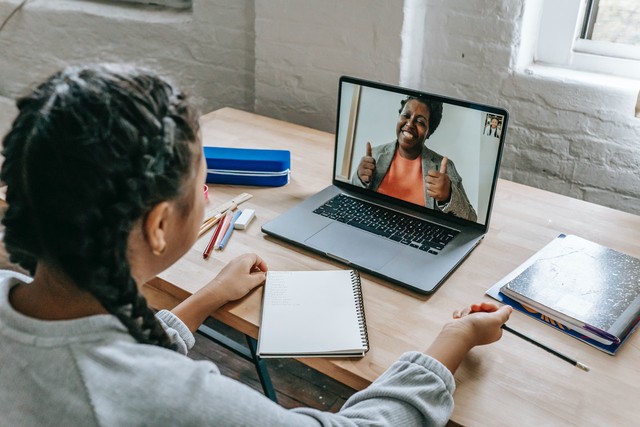Distance learning, also known as online or remote learning, has emerged as a crucial component of modern education. With the rapid advancement of technology, distance learning has become increasingly prevalent, offering students the flexibility to pursue education outside traditional classroom settings.
In today’s educational landscape, distance learning plays a pivotal role in providing access to quality education to a diverse range of learners, regardless of their geographical location or personal circumstances.
Beyond its convenience and accessibility, distance learning has broader impacts and implications that extend far beyond the boundaries of traditional education. It has the potential to revolutionize the way we learn, breaking down barriers and opening up new opportunities for collaboration, cultural exchange, and lifelong learning.
In this article, we will explore the influence of distance learning beyond the classroom. We will dive into its evolution, its impact on accessibility and inclusivity, its role in promoting flexibility and convenience, its contribution to global reach and cultural exchange, and its influence on traditional education models.
By examining these key aspects, we aim to provide a comprehensive understanding of the transformative power of distance learning in shaping the future of education.
Evolution of Distance Learning
Distance learning has a rich history that dates back to the 18th century, with the earliest forms of correspondence courses. These courses were conducted through mail, allowing students to receive study materials and submit assignments without being physically present in a classroom. The concept gained popularity in the 19th century with the establishment of institutions such as the University of London External Programme, which offered degrees through distance learning.
The 20th century saw significant advancements in distance learning, particularly with the introduction of radio and television broadcasts for educational purposes. These mediums enabled educators to reach a larger audience and provide learning opportunities to individuals who were unable to attend traditional classes.
However, it was the advent of the internet and digital technology that truly revolutionized distance learning. With the rise of online education platforms and learning management systems, students now have access to a wide range of courses and educational resources from institutions around the world. The use of multimedia tools, such as videos, interactive simulations, and virtual reality, has further enhanced the learning experience, making it more engaging and immersive.
Technological advancements continue to play a crucial role in the growth of distance learning. Mobile devices, cloud computing, and artificial intelligence are increasingly being integrated into online education, providing students with more personalized and interactive learning experiences.
As technology continues to evolve, the possibilities for distance learning are endless, opening up new avenues for education and knowledge dissemination.
Accessibility and Inclusivity
Distance learning has significantly improved accessibility to education, breaking down barriers that once limited learning opportunities for many individuals. One of the key ways in which distance learning has enhanced accessibility is by allowing individuals with disabilities to access educational resources and participate in learning activities from the comfort of their homes.
Online platforms can be designed to be accessible to individuals with visual, auditory, or mobility impairments, ensuring that everyone has equal access to education.
Distance learning has also been instrumental in reaching students in remote locations, where access to traditional educational institutions may be limited. Through online courses and virtual classrooms, students living in rural or isolated areas can access high-quality education without the need to travel long distances.
Furthermore, distance learning has been particularly beneficial for non-traditional students, such as working adults, parents, and individuals with busy schedules. The flexibility offered by online education allows these students to balance their academic pursuits with their other responsibilities, making education more accessible and achievable.
Flexibility and Convenience
Distance learning offers unparalleled flexibility and convenience to learners, allowing them to pursue education on their own terms. One of the key advantages of distance learning is the ability for students to access course materials and lectures at any time and from any location, as long as they have an internet connection. This flexibility enables students to balance their education with work, family, and other responsibilities, making it easier for them to achieve their academic goals.
Distance learning has benefited individuals with busy schedules or unique circumstances in several ways. For example, working adults who are pursuing further education can attend classes and complete assignments outside of their regular working hours. This flexibility allows them to advance their careers without having to take time off from work.
Similarly, parents can benefit from distance learning by studying from home while taking care of their children. This flexibility allows them to pursue higher education while still fulfilling their parental responsibilities. Distance learning also benefits individuals with disabilities or health issues, as they can study from the comfort of their homes without having to navigate physical campuses.
Global Reach and Cultural Exchange
Distance learning has transformed education by providing students with the opportunity to connect with peers and instructors from around the world, fostering a global learning community. Through online platforms, students can collaborate on projects, participate in discussions, and share ideas with individuals from diverse cultural backgrounds. This global reach has enriched the learning experience, exposing students to new perspectives and ideas that they may not have encountered in a traditional classroom setting.
Cultural diversity plays a crucial role in enhancing the learning experience in distance learning. By interacting with students and instructors from different cultures, students gain a broader understanding of the world and develop cross-cultural communication skills. This exposure to diverse perspectives can help students become more empathetic and open-minded, which are valuable qualities in today’s interconnected world.
Conclusion
Distance learning has evolved significantly over the years, from its early days of correspondence courses to the modern era of online education. Throughout its evolution, distance learning has had a transformative impact on education, revolutionizing the way students learn and educators teach. By breaking down barriers to access and promoting inclusivity, flexibility, and global connectivity, distance learning has opened up new opportunities for learners around the world.
One of the key aspects of distance learning is its ability to offer flexibility and convenience to learners, allowing them to balance education with work, family, and other responsibilities. This flexibility has made education more accessible to non-traditional students and individuals with unique circumstances, empowering them to pursue their academic goals on their own terms.


